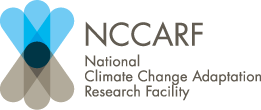You are here
Who owns my risk?
One way to think about risks is through risk ownership. Risks can be owned by the organisation that owns the asset (such as a building owner), or the organisation that is responsible for managing the risk associated with that asset (such as a local council). Risks can be linear, for example the gradually increasing risk to children from exposure to lead, or non-linear, such as the sudden emergence of a new disease. Risks can be systemic, such as climate change, affecting diverse systems across multiple time frames.
Systemic risks can be contagious, that is, spread to other areas, if the scale of an event is too big for the organisation to manage, or if in managing the impact of an event unrelated assets or services are damaged. For example, a council may close a road or bridge to manage flooding risk, affecting the businesses and households who rely on that road.
The ideal is to ensure that everyone understands and accepts their risks and manages them appropriately. This is the basis of research by Celeste Young, a Collaborative Research Fellow at Victoria University.
‘Making natural disasters everyone's business is not a short-term proposition,’ Ms Young said.
‘It requires repositioning how we view, interact with, and understand risk in both current and future contexts. Longer-term strategic thinking and clarity of risk ownership are crucial.’
‘This task is difficult because the different types of risks associated with natural hazards are systemic, resulting in interactions between seemingly unrelated risks. In many cases, risk ownership will be shared, which can make it a confusing and frustrating space for policy makers and practitioners alike.’
‘When we look at what we as both institutions and individuals value, you get an idea about what is most important. This is often the key determinant in what we spend our time and energy on. Values are important to consider when you frame communication about risk ownership. It gives you a starting point because it is much more likely that people will be willing to do something to protect what matters to them.’
Ms Young’s research found that although there was a relatively even distribution of asset ownership across institutions, ownership of risk consequence, impact and actions was primarily with local and state government.
‘What has been lacking is a clear mechanism for identifying how risk ownership can change and transfer across different temporal and geographic scales. Assigning risk ownership through a values based decision making process is a good way to start to determine who should be responsible, and if they should contribute resources to manage the risks.’
More information at: https://ajem.infoservices.com.au/items/AJEM-31-04-11#sthash.9VHBnrUZ.dpuf
4brof7lqcq073mpl.png





